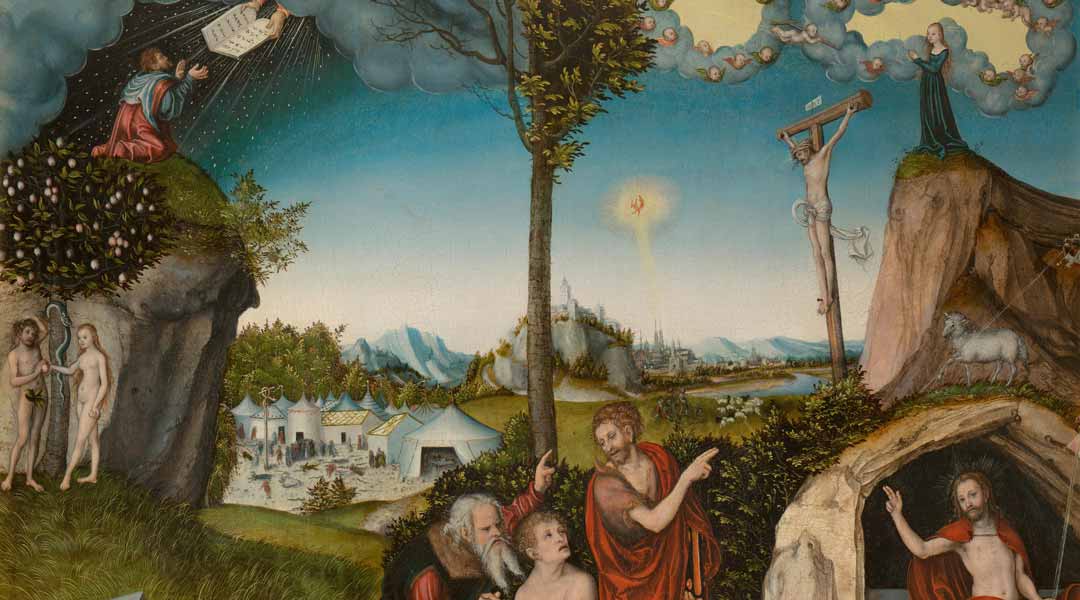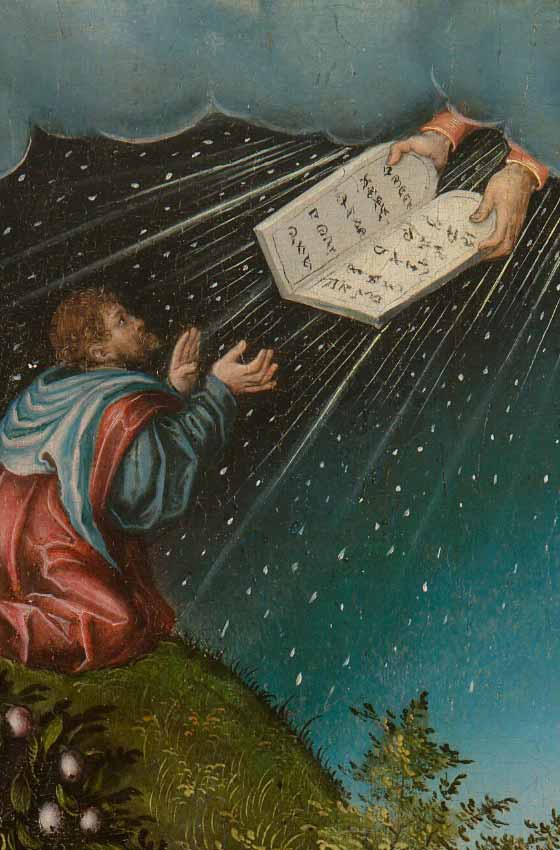Workshop on Esoteric Christianity
20 – 25 March 2023
$550 USD (Installments Possible)
Join us for a week-long online workshop on Esoteric Christianity. We will meet for six consecutive days to explore the inner meaning of the Christian teaching, how it was structured upon the Old Testament, how it was designed to complement and complete it, and how it highlighted fundamental truths about human psychology. We will anchor our event in a painting by Lucas Cranach the Elder titled The Law and the Gospel. Each session will span two hours with an intermission, and will conclude with a practical exercise for the following day. The group’s verifications will lay the groundwork for the next session. The meetings will be recorded and made available for viewing afterwards. Read more below:
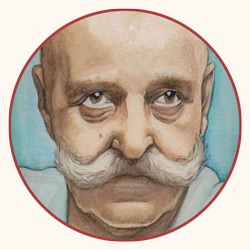
At the root of the doctrine upon which the Christian religion is founded there was placed almost the whole of the previously existing great teaching, now called Judaism… The great founders of the Christian religion changed only its outer details to conform to the degree of mental development of the contemporaries of Jesus Christ.
Eden
Esotericism implies an outer and inner interpretation of religious texts. The outer interpretation takes Biblical events literally. God is an external deity deeply involved in human affairs. The prophets are His chosen representatives. Their intervention in social conflict is historical.
The inner interpretation doesn’t necessarily dismiss this literal approach, but assigns to it a symbolic significance. The stories are analogies true on all scales, including the micro-cosmic human being. Humans are a world in miniature and they, too, have (or should have) a governing element, or inner God. This governing element requires the aid of representatives. And it is bound to encounter resistance from the parts of us that cannot comprehend it.
The first scene in Cranach’s painting shows Adam and Eve in Eden, standing by the tree of knowledge of good and evil. Accordingly, we will start our workshop by considering the symbolic significance of Eden; an ideal state that is our birthright but is lost through the acquisition of knowledge. This ‘original sin’ lies at the foundation of Christianity and sets in motion all the chapters to follow.
Adam and Eve in Eden, by the Forbidden Tree
All appeared new, and strange at first, inexpressibly rare and delightful and beautiful. I was a little stranger, which at my entrance into the world was saluted and surrounded with innumerable joys… My very ignorance was advantageous. I seemed as one brought into the Estate of Innocence.
Thomas Traherne | 17th c. English poet
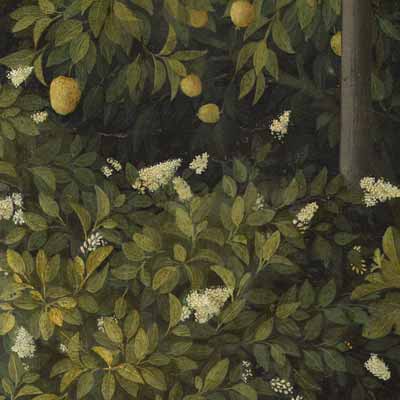
Moses and the Israelites in Sinai
Egypt
A symbolic approach to religious texts can freely disregard their chronology. In Cranach’s painting, Adam and Eve need only climb up the hill behind them, or walk a few meters around it, to meet Moses and the Israelites camped in the Desert of Sinai. Chronologically, 2500 years separate these two stories, but symbolically this is secondary. By relating these two scenes, Cranach suggests that the consequence of having listened to one subtle serpent in Eden, is being plagued by a host of serpents in the desert.
In our second session we will examine the symbolic meaning of Egypt. Just as Adam and Eve were driven out of Eden, so were the Israelites driven out of Israel into Egypt. Their slavery in a foreign land marks the opposite extreme of Eden. We will attempt to recognize these two states within us and lay the ground for how to free ourselves from one and return to the other.
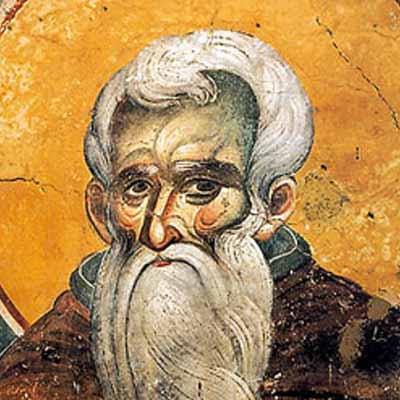
When the mind descends into the darkness of impure thoughts — and that is what Egypt means — then the passions drag it forcibly and against its will into their service.
St Neilos the Ascetic | Philokalia
Laws
From all the events in the Israelites’ journey from Egypt to the Promised Land, Cranach chooses two: Moses receiving the tablets of the law atop Mount Sinai and the rebellious Israelites plagued by serpents in the Desert. In fact, the journey from Egypt to the Promised Land is fraught with resistance and rebellion on the part of the people. We will examine the inner meaning of this rebellion, to better understand and anticipate our internal resistance.
The Tablets of the Law
Receiving laws from God is a pivotal moment in this transition. Formerly, against their will, the Israelites were subject to Egyptian law. Having escaped from Egypt, these new laws are meant to bring a structure needed for them to function as a single nation. We will examine the symbolic significance of this transition.
Moses Receiving Laws from God
Rules pursue a definite aim: to make people behave as they would behave ‘if they were,’ that is, if they remembered themselves.
George Gurdjieff

John the Baptist Calling for Repentance
Repentance
A tree in the center of Cranach’s painting divides the canvas in two. We now leave the Old Testament scenes on the left and travel into the New Testament. Time and space again are disregarded, and to us it seems that the Israelites plagued by serpents need only walk 50 meters behind this tree, to leave the desert and enter green pastures. Here, they become the lost sheep of Israel, awaiting the return of their Shepherd.
John the Baptist
John the Baptist stands in the foreground of this scene, gesturing ‘return’ or ‘repent’. Traditionally, John the Baptist is considered the last of the Old Testament prophets. He was born and began preaching just before Jesus, who is the first of the New Testament prophets. In this fourth session we will explore the inner significance of the transition from the Old to the New, and the particular emotion of ‘repentance’ that should accompany this transition.

Repentance does not at all mean that a man does something and then repents and says to himself, ‘I will not do it again’ because he will. If one has done a thing, the trace of it remains, so that it is easier to do it a second time, and this creates momentum. One can sometimes overcome this momentum by repentance, which means suffering.
Annunciation
Across the canvas from Moses receiving the Law, Cranach places Mary receiving the Holy Ghost. Typical of this period of Christian painting, Mary and Eve are modeled after the same woman. Mary is Eve, transformed. In this fifth session we will explore the inner meaning of this transformation.
Both Mary and Moses stand atop a mountain convening with God. However, one important difference distinguishes them. Moses cannot see beyond the thick cloud through which he receives the tablets. The same cloud opens above Mary, revealing the sun and the source that will impregnate her. This contrast between the veiled Old Testament and unveiled New Testament was common in early Christian art. We will explore these two modes as two distinguishable states in us.
Mary Impregnated by the Holy Ghost
The law of the Old Testament… cleanses human nature of all defilement. The law of the New Testament… raises the intellect by means of spiritual knowledge from the sight of material things to the vision of spiritual realities.
St Maximos the Confessor | Philokalia
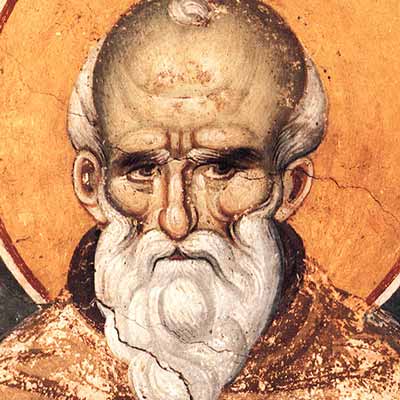
Jesus Triumphing over Time and Death
Redemption
When God expelled Adam and Eve from Eden, he cursed them with particular punishments. To Eve, he said, “I will greatly multiply your sorrow and your conception; In pain you shall bring forth children…” And to Adam, he said, “Cursed is the ground for your sake; In toil you shall eat of it All the days of your life.”
These curses set the rules for all generations to follow, including that of of Jesus. Even the redeemer of Paradise must conform to these rules before he can overcome them. Hence, the ministry of Jesus is fraught with toil and suffering. Cranach completes his collage of Biblical scenes with the resurrection, showing Jesus rising from his tomb to trample death (a skeleton) and deceit (a dragon).
And yet, the central tree on Cranach’s canvas places this apparently completed journey in particular context. The side of the tree facing the Old Testament has no foliage and seems to be in winter; the side facing the New Testament shows green foliage and seems to be in summer. The cycle of loss and redemption portrayed in Cranach’s painting must be repeated, again and again, for redemption to be made permanent.

Suffering is ‘purgatory’, that is, cleansing.. if a soul can but see this world of subjective terror and remorse for what it is, it is in that moment released from the cycle of lives and escapes judgment altogether.


